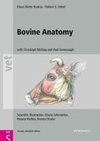
-
 Anglický jazyk
Anglický jazyk
Equine hoof
Autor: Source: Wikipedia
Source: Wikipedia. Pages: 24. Chapters: Caulkin, Farrier, Hipposandal, Hoof boot, Hoof glue, Horseshoe, Horse hoof, Jaime Jackson, Laminitis, Natural hoof care, Navicular Disease, Quittor, Thrush (horse). Excerpt: Laminitis is a disease that affects the... Viac o knihe
Na objednávku, dodanie 2-4 týždne
14.13 €
bežná cena: 15.70 €
O knihe
Source: Wikipedia. Pages: 24. Chapters: Caulkin, Farrier, Hipposandal, Hoof boot, Hoof glue, Horseshoe, Horse hoof, Jaime Jackson, Laminitis, Natural hoof care, Navicular Disease, Quittor, Thrush (horse). Excerpt: Laminitis is a disease that affects the feet of ungulates. It is best known in horses and cattle. Clinical signs include lameness, inflammation, and increased temperature in the hooves. Laminitis is characterized by inflammation of the digital laminae of the hoof, and severe cases with outwardly visibly clinical signs are known by the colloquial term founder. The digital laminae are responsible for suspension of the axial skeleton of the animal within the hooves of ungulates, and act as shock absorbers during locomotion. In horses there are about 600 pairs of interleaved laminae: the epidermal laminae attached to the hoof wall and the dermal laminae attached to the coffin bone (a.k.a. PIII, P3, the third phalanx, pedal bone, or distal phalanx). Laminitis literally means inflammation of the laminae, and while it remains controversial whether this is the primary mechanism of disease, evidence of inflammation occurs very early in some instances of the disease. Laminitis is characterized by a 'compromise in the interaction' of the Laminae between the hoof wall and the coffin bone, the mechanism of which remains unclear and is currently the subject of much research. Laminitis can be either mechanical or systemic. Mechanical laminitis starts when the hoof wall is pulled away from the bone or lost, as a result of external influences. Mechanical laminitis can occur when a horse habitually paws, is ridden or driven on hard surfaces (or loses laminar function, due to an injury or pathologies affecting the hoof wall). Systemic laminitis is usually bilateral (on two feet) and though it can affect any number of feet, it is most common in the front feet. At present there are three primary hypotheses for the mechanism that results in laminar failure. Systemic Laminitis can lead to rotation or sinking and this in turn may lead to abscesses, within the hoof capsule, that can be severe and very painful. Hoof specimen, sagittal section. Severe hoof capsule rotation and P3 penetration
- Vydavateľstvo: Books LLC, Reference Series
- Rok vydania: 2015
- Formát: Paperback
- Rozmer: 246 x 189 mm
- Jazyk: Anglický jazyk
- ISBN: 9781155701943



 Nemecký jazyk
Nemecký jazyk 








